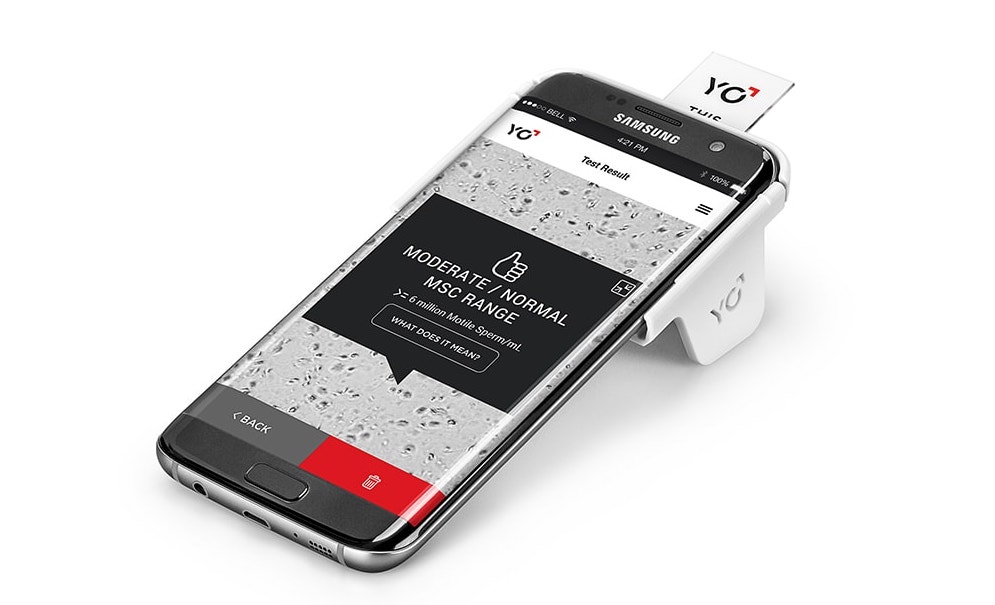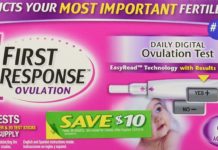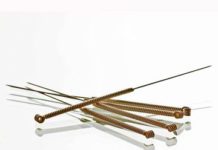
So you've been trying to conceive for a while, but it's just not happening. You've tried ovulation predictor kits. Your partner may have even bought a sperm count kit—but, the ones currently on the market only test how many sperm there are, not how well they move.
But that all changed with the first FDA-approved test to not only count sperm, but see how well they swim hit the market in the U.S. in 2016. And the test? It's not a procedure done at your doctor's office but an app for your smartphone which means you can test your swimmers in the comfort of your own home.
The YO Sperm Test uses an app and a mini-microscope "clip" that goes on the top of your phone, allowing the device to access your phone's light, focus and recording capabilities. Then you prepare the sample on a slide (kind of like in high school biology class), stick it into the clip, and in two minutes you'll actually be able to see the moving sperm on your phone's screen.
In another minute or so, the test results will be ready—and while you wait, the app provides some cheeky "sperm trivia" to lighten the mood. The video and results are then recorded in the app.
And after that? Here's what you need to know.
What do your results mean?
Because it's an over-the-counter product, Deutsch says the test can't reveal actual sperm count values, but rather gives a reading of "low" or "moderate/normal" based on World Health Organization (WHO) guidelines for sperm motility (how well they move) and concentration (how many there are). The test reports a composite of these two parameters called "motile sperm concentration," or the number of moving sperm.
Although three in one hundred cases reported moderate/normal instead of an actual low result in the FDA studies, Deutsch says that number is reduced by the fact that the YO kit contains two tests.
"The consumer should run both, as it is a known fact that sperm values change over time based on many factors," like going in a hot tub, she says. So, the second test should be run one to two weeks later. "Additionally, the video of the sperm sample is a good reference for the consumer or a physician to look at for further information."
Is it accurate?
"Extensive testing has been performed on the YO Home Sperm Test—over four years to be exact," says Marcia Deutsch, CEO of Medical Electronic Systems, the parent company of YO Sperm Test and producer of commercial-grade semen analyzers for major labs. "The technology is able to read the sperm sample 99 percent of the time, as long as the instructions are followed. [If it can read the test] the results are more than 97 percent accurate based on FDA studies of 316 participants."
What do you do with a “low” result?
As with any home test, the YO kit is just the first step in figuring out if you have a fertility issue. So if your partner's results come back low, he should have a test done in a fertility clinic to confirm the results. There is additionally one more piece to the sperm puzzle—morphology, which is how many normally shaped sperm there are—that your doctor will want to look at as well.
Even if you've done all the home tests and they've come back normal, see a doctor if you haven't conceived in one year, or six months if you're over 35.































